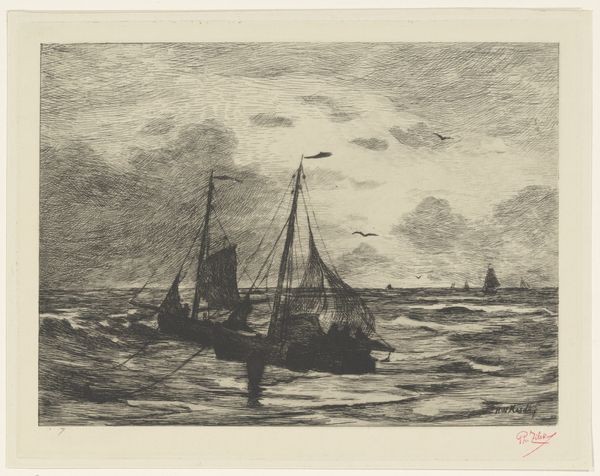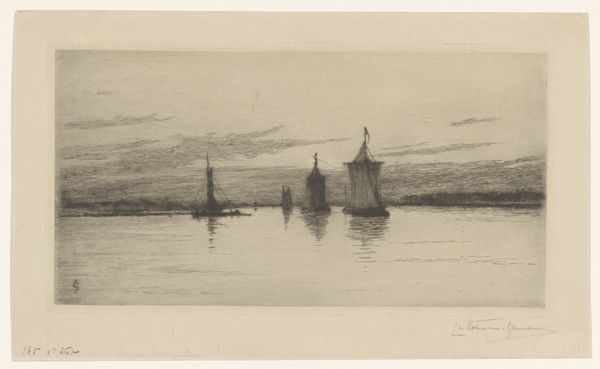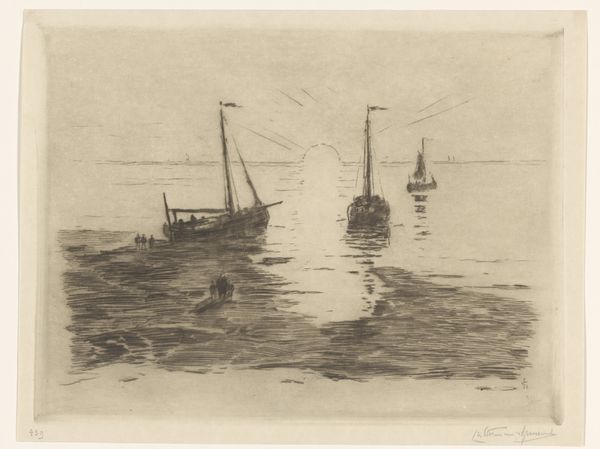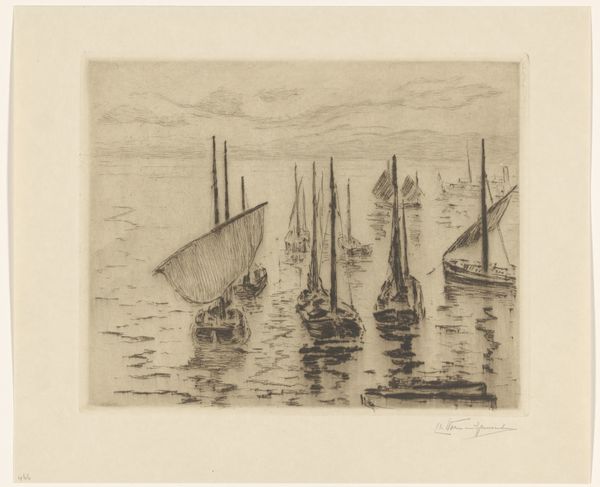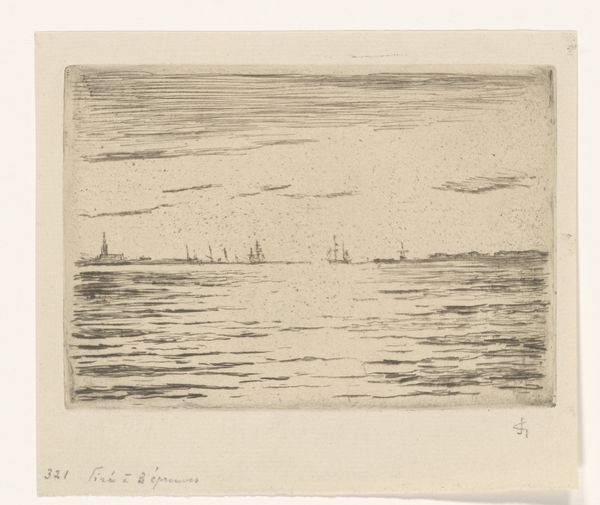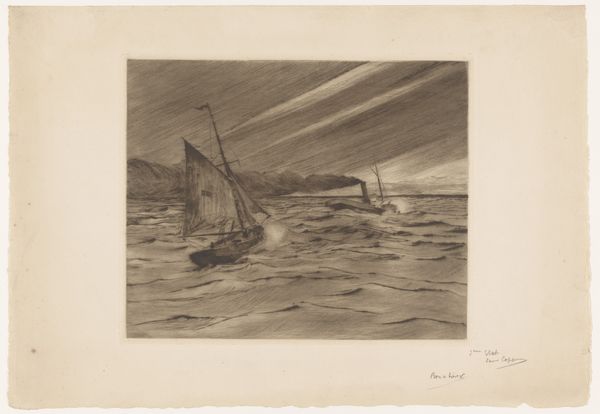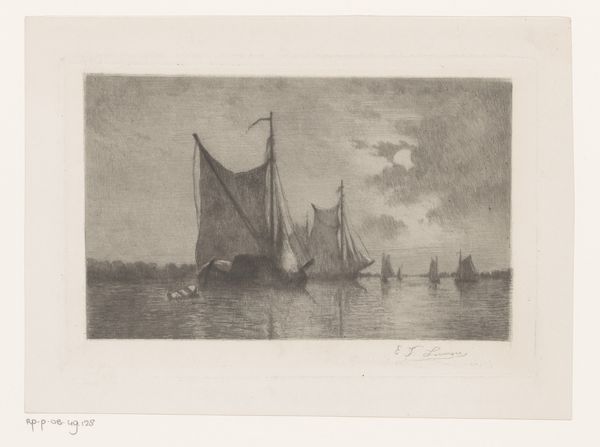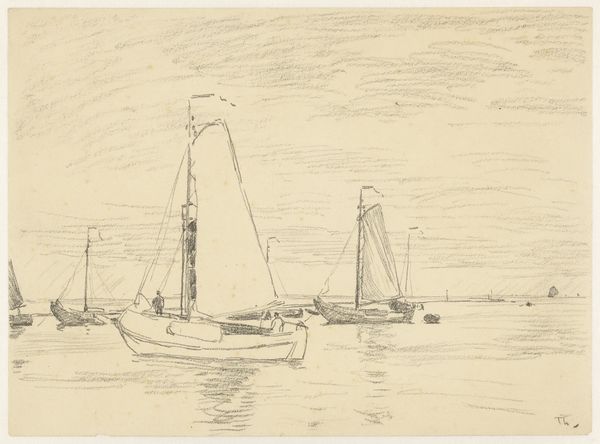
Gezicht op de Maas bij Dordrecht bij avond 1851 - 1902
0:00
0:00
print, etching
#
dutch-golden-age
# print
#
etching
#
landscape
#
river
#
etching
#
pencil drawing
#
line
#
realism
Dimensions: height 201 mm, width 298 mm
Copyright: Rijks Museum: Open Domain
Curator: The gloom is striking. Editor: Indeed. What you’re observing is Carel Nicolaas Storm van ‘s-Gravesande’s etching, titled “Gezicht op de Maas bij Dordrecht bij avond,” placing us along the Maas River near Dordrecht in the evening. It was created sometime between 1851 and 1902, and it’s now held at the Rijksmuseum. Curator: The sky is particularly interesting, nearly oppressive, achieved entirely through line work. The artist truly manipulated the etching process to capture the weight and drama of the impending storm. Think of the labor, the layering. Editor: Absolutely. I'm drawn to how that same meticulous linework reflects the social history of the Dutch waterways; consider their importance for trade, transport, and the livelihoods connected to the river Maas during that era. The boats are so dependent on the weather. Curator: And speaking of those boats, note how their materiality—sailcloth, wood, rope—contrasts against the vastness of the river and sky. What kind of statement is he making here with these ordinary ships juxtaposed against the scale and grandeur of the open sky? Editor: Well, the piece evokes that constant interplay between man and nature, or community and isolation, certainly something culturally relevant. One of my questions would be how something so clearly intended for mass production gets displayed and valued in this place today, framed as a cultural artifact in a modern gallery space. Curator: That contrast underscores an interesting idea about the value of such landscape prints within art history – originally intended for wider distribution, now revered as singular pieces of fine art with specific value, a product elevated to fine art. Editor: It’s fascinating how an etching can tell so many stories—from the literal depiction of a place and time, to broader questions about Dutch society and how its visual record is consumed and understood today. Curator: A landscape that carries significant meaning regarding the human endeavor. Editor: The ways we shape—and are shaped by—our landscapes.
Comments
No comments
Be the first to comment and join the conversation on the ultimate creative platform.


